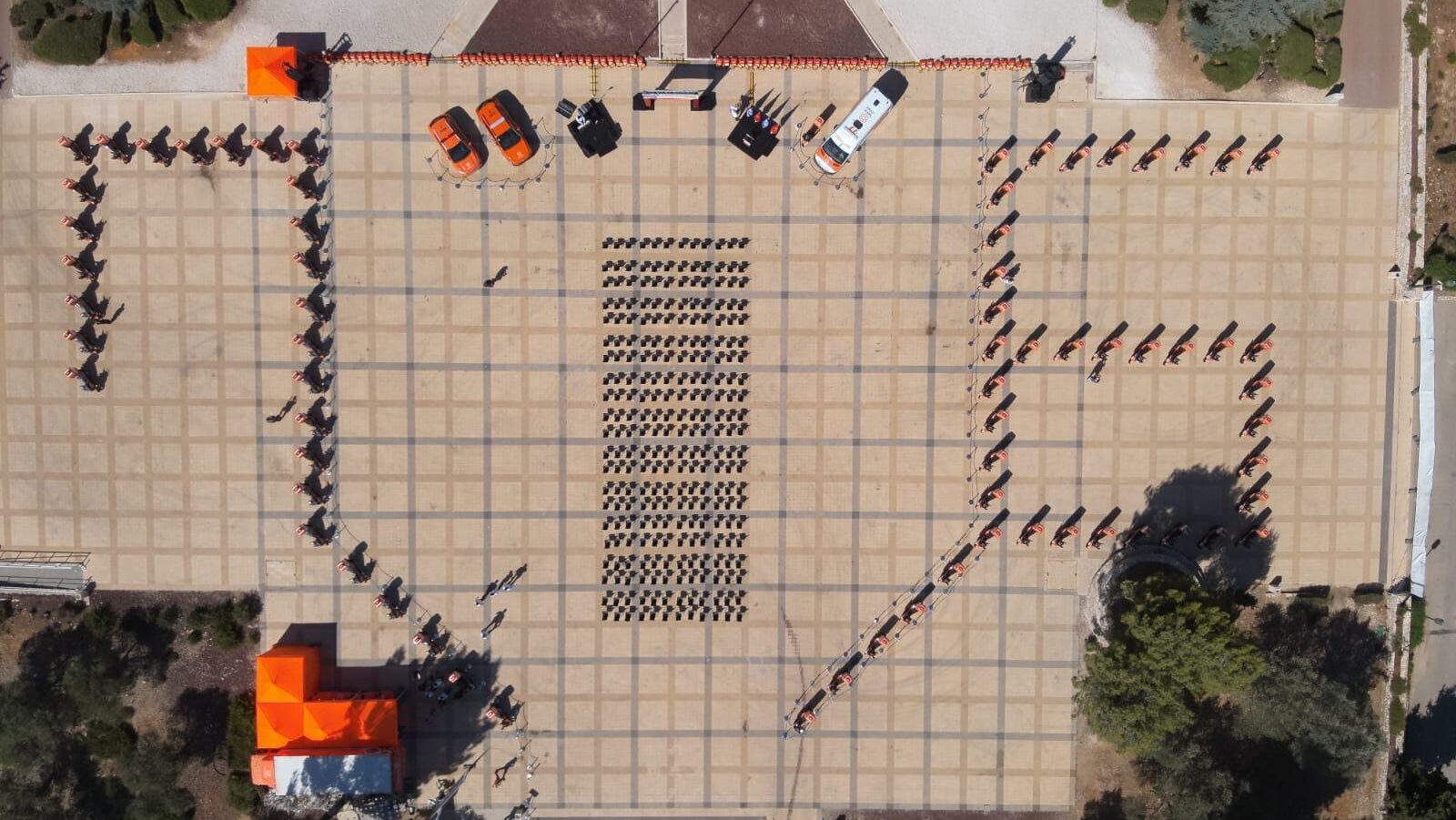A Fleet in Honor of the Fallen
United Hatzalah unveiled 76 new vehicles equipped to navigate traffic quickly and reach emergencies in minutes, supporting over 7,000 volunteers nationwide
Marking Israel’s 76th anniversary, a small gathering recently took place on the hilltop of Mount Herzl in Jerusalem, where fallen soldiers are laid to rest, to unveil a fleet of 76 emergency vehicles. The “ambucycles” (emergency motorcycles), emergency vehicles, and an ambulance will be strategically deployed across Israel’s North, Gaza Envelope, and West Bank regions.
Benefactor Dr. Miriam Adelson dedicated emergency vehicles to the Hebron area in memory of Maor Lavi, a United Hatzalah volunteer medic who died in December while serving in the reserves in Gaza, leaving behind his wife and four children. Additionally, a bulletproof ambulance and emergency vehicle were dedicated to Elad Tomer, another devoted United Hatzalah volunteer who was killed in the line of duty. Tomer’s family attended the ceremony to honor his memory and sacrifice.
“In the beginning, our family donated anonymously, and we were very happy. We were told that if we gave our name, others would join us. That is what brought us to establish the Adelson Family Emergency Unit of United Hatzalah emergency vehicles. The memory of the volunteers will live on forever, and their ambulances will save many lives,” said Dr. Miriam Adelson during the ceremony.
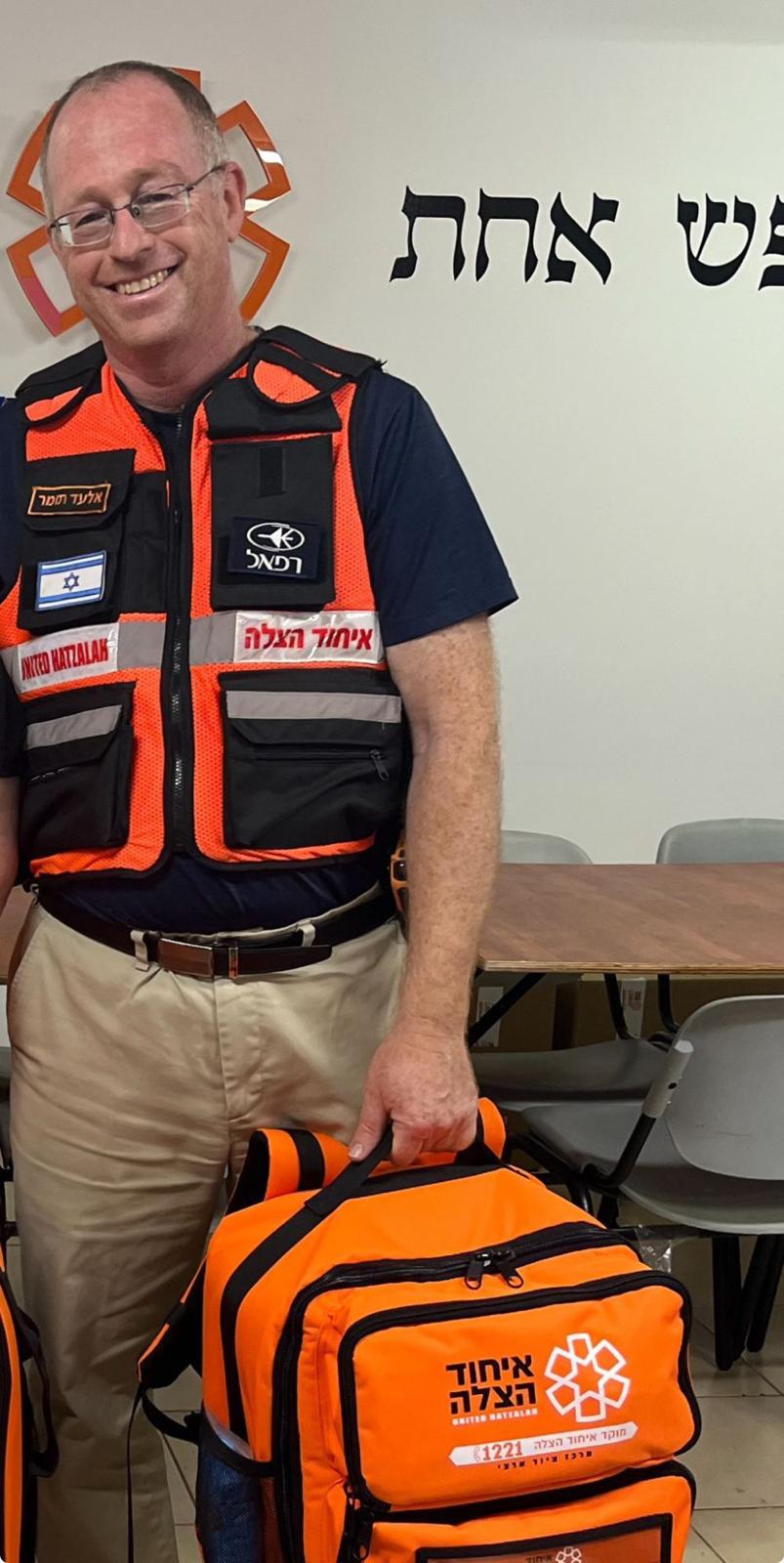
Elad Tomer. (Courtesy United Hatzalah)
United Hatzalah has over 7,000 volunteers, all trained as medics, paramedics, and doctors, and 95 branches nationwide. Now, with the help of Dr. Adelson’s donation, volunteers will have 1,075 ambucycles at their disposal, all of which are equipped with the necessary medical equipment to provide initial treatment in the field. Their design allows volunteers to swiftly navigate through traffic and access narrow alleyways, ensuring rapid response times. Additionally, each vehicle is fitted with a GPS chip, enabling constant localization by the dispatch center.
“Motorcycles are really important because, at the end of the day, an ambulance is a big car. It gets stuck in traffic. It takes time. With such vehicles, you skip the whole thing and get anywhere immediately,” United Hatzalah volunteer Yechiel Gurfein told The Media Line.
Thanks to this fleet of essential vehicles, the first responders can reach emergencies within minutes. “We have people in the South and in the North, so if something happens, we are the first to be there within three minutes or less. We are experts in emergency situations,” volunteers shared with The Media Line.
Yuval Afriat, a volunteer operating in northern Israel, described the current situation as highly complex.
“You hear sirens and shelling constantly. At the start of the war, there were some injured people who needed our help. Now, the most challenging area for us is Kiryat Shmona, where elderly residents have chosen to stay despite the ongoing conflict. We are there to assist them, and it feels like they are part of my family,” he said.
Afriat also noted that many of the cases that volunteers have recently responded to with medical assistance are unrelated to the war.
“Many times, elderly people just need our help; they might feel unwell or have health issues regardless of the situation,” he explained.
United Hatzalah was among the first line of response during the October 7 terror attack. On that day, the organization received 12,000 calls to dispatch and responded to about 3,000 emergencies.

Maor Lavi. (Courtesy United Hatzalah)
Linor Attias, a Jerusalem resident and mother of two girls, has dedicated her life to saving others after losing her uncle in a 2003 bombing attack. This tragic event influenced her life mission.
On October 7, Attias served as one of the commanders of United Hatzalah medical forces.
“I saw horrible, devastating terrorism and barbarism that happened to us. So many were injured, cars were still on fire, and bodies all over. We tried to save as many people as we could,” she told The Media Line.
Attias shared that for her, the most difficult part was to see children among the victims of the October 7 massacre.
“For me as a mother, seeing the kids was the hardest part. I remember a baby that a Hamas terrorist shot in the head inside the car so that there was no head anymore. I will never forget it. I still have flashbacks from the moment when I saw that car and the mother. They shot her in the head as well,” she recalled.
Give the gift of hope
We practice what we preach:
accurate, fearless journalism. But we can't do it alone.
- On the ground in Gaza, Syria, Israel, Egypt, Pakistan, and more
- Our program trained more than 100 journalists
- Calling out fake news and reporting real facts
- On the ground in Gaza, Syria, Israel, Egypt, Pakistan, and more
- Our program trained more than 100 journalists
- Calling out fake news and reporting real facts
Join us.
Support The Media Line. Save democracy.
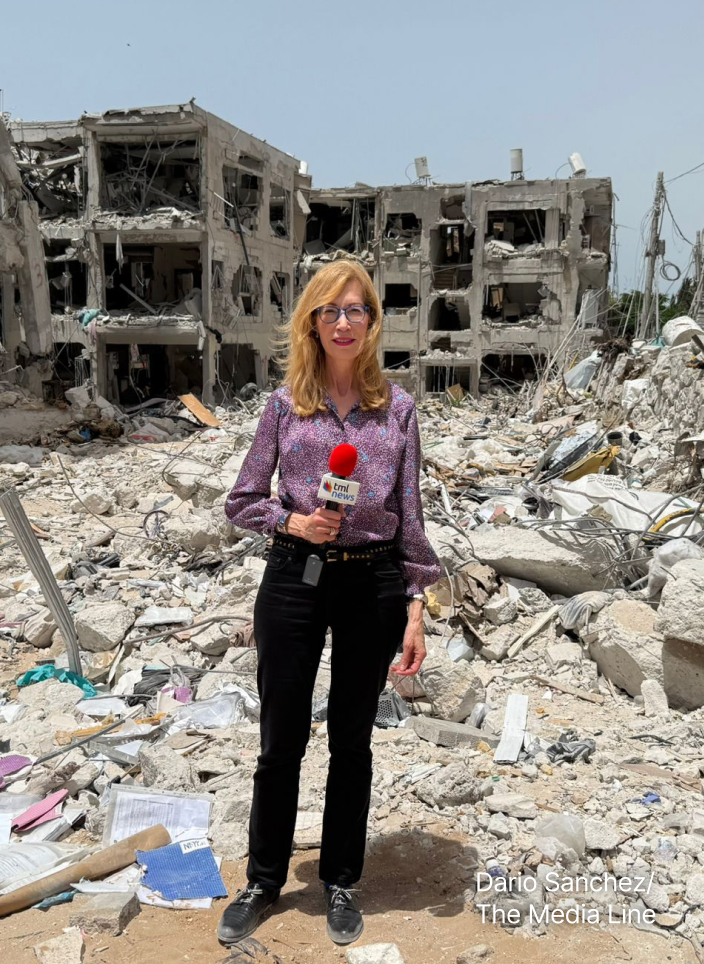
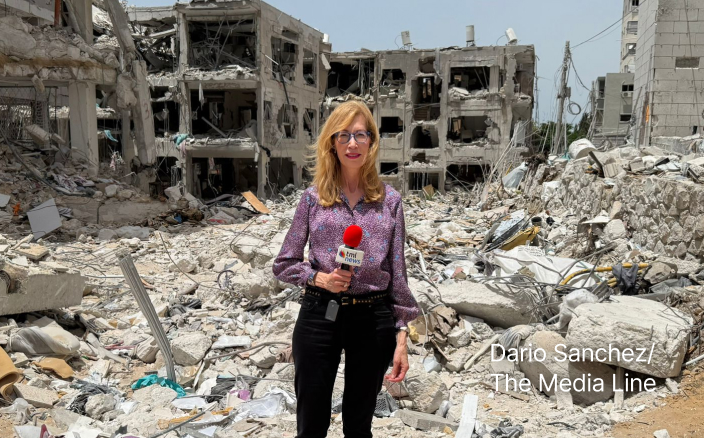
Attias’s memories of the day are still evolving, with recollections emerging over time.
“I still have black spots. Often, I remember a new thing, and it feels horrific and fresh. Everything there was horrible and hard to witness and understand. That kind of evil doesn’t exist even in stories and movies,” she said.
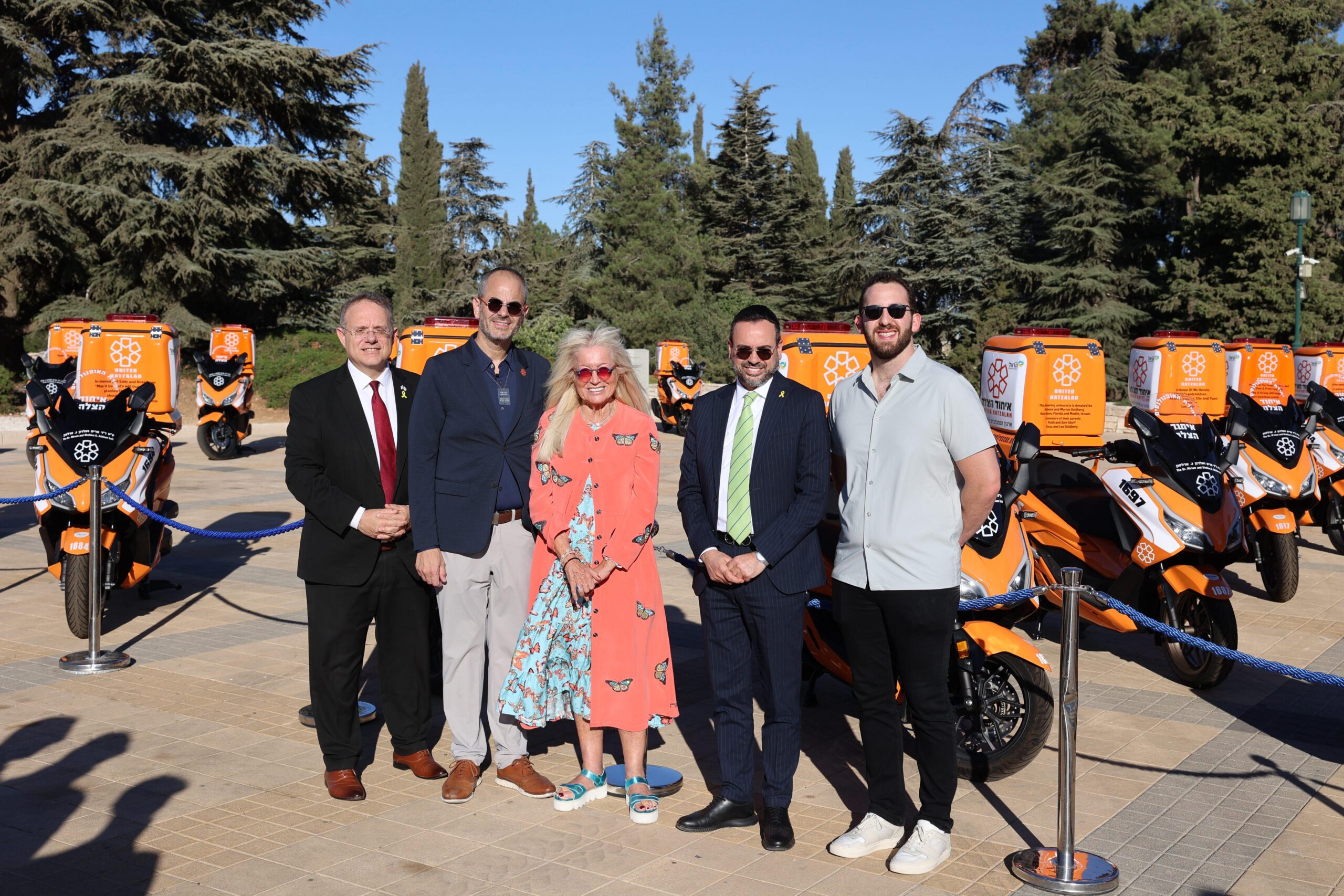
(L-R) Yaacov Hagoel, chairman of the World Zionist Organization; Eli Beer, president of United Hatzalah; Dr. Miriam Adelson, philanthropist; Uriel Buso, Israel’s minister of health; Matan Adelson, philanthropist. (Courtesy United Hatzalah)
Despite these traumatic experiences, Attias tries to focus on the positive moments.
“I try to hold on to the good memories. For example, to remember the kids, people, soldiers that we treated and saved,” she explained
“I know that October 7 is going to be part of who I am. It’s going to be with me, especially during the night,” she added.
Another volunteer of United Hatzalah, Yechiel Gurfein, reached the south in the early hours of October 7, right after hearing the first siren.
“I remember myself driving through streets littered with bodies,” he recalled.
Gurfein spent the day transferring patients from all the wards to hospitals.
“In the afternoon, I found myself at the entrance to [Kibbutz] Be’eri, right next to the gates. I could still hear all the gunshots inside,” he told The Media Line.
From Saturday afternoon until Sunday morning, Gurfein treated soldiers and civilians at the entrance to the kibbutz.
At one point during the night, Gurfein heard over the army radio that an injured soldier was being brought out. “I got ready, put on new gloves, and waited for the soldier to arrive. Instead, I saw an injured K-9 dog,” he said.
“I’m used to treating people, not dogs. But when I saw the K-9, I realized it’s not a regular dog. He’s a soldier, just as they said on the radio,” Gurfein explained.

Dog that Yechiel Gurfein saved. (Courtesy United Hatzalah)
The dog had a bullet wound in its leg, and volunteers treated it just like a human, stopping the bleeding and packing the wound with gauze.
“I realized that this dog was crucial for the soldiers. If we said the dog couldn’t go to the hospital, it would affect their motivation to continue fighting,” he said, adding that volunteers decided to take the dog to the hospital together with the injured soldiers.
“The dog survived, though its leg had to be amputated,” Gurfein said.
For two and a half weeks, Gurfein stayed in the South, sleeping in his car and showering at friends’ houses. “I just did shifts around the clock for two and a half weeks,” he explained.
United Hatzalah’s psycho-trauma unit is now helping volunteers overcome their traumas.
“Psychologists treat every one of us as long as we need. It has ups and downs. Sometimes, I still can smell blood, and I know that I need to call my therapist and speak with her for myself, my girls and everyone that I’m going to save in the future,” Attias said.
“The way I found to help myself was through dog therapy,” Gurfein shared. “After October 7 and after I treated this dog, and saw how it really affects people, I decided I wanted to be able to provide dog therapy myself,” shared Gurfein.
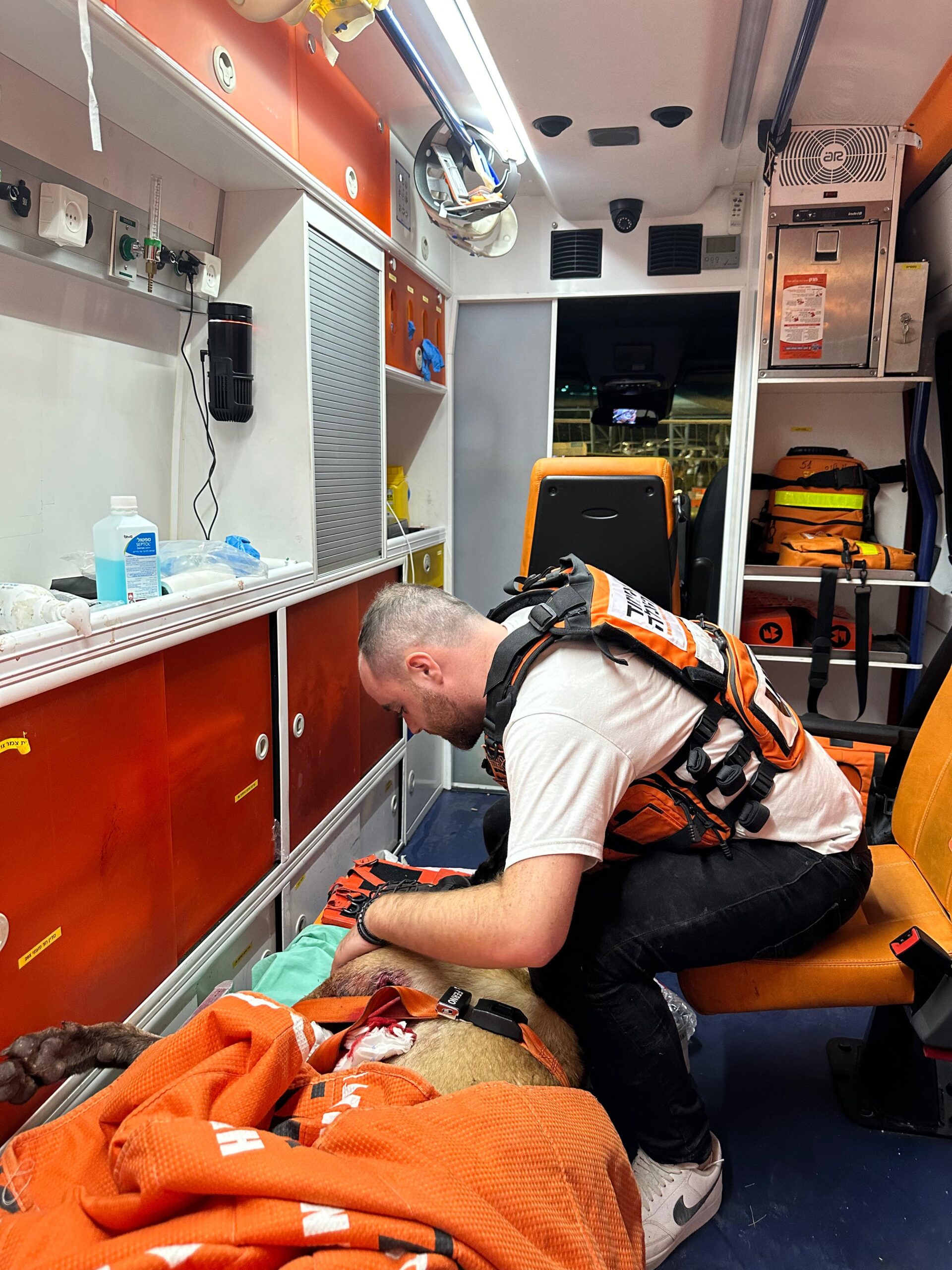
Yechiel Gurfein saving the dog. (Courtesy United Hatzalah)
He is now in the midst of his studies and has even adopted a dog who was born on October 7.
“I named the dog Be’eri. So now I have this big Golden Retriever named Be’eri, who was born while I was out there fighting and saving lives,” he said.
Yechiel Gurfein and Be’eri are now training together.
United Hatzalah strongly depends on the constant training of new volunteers, with many joining from America and Europe. Although the organization has not seen an increase in the number of volunteers since the beginning of the war, a rise is expected as more and more training courses take place.
One such summer program, NCSY Hatzalah Rescue, provides high school students interested in pursuing a medical career a chance to experience the field firsthand.
“This is our sixth year running. We started with 25 kids, and now we have a full bus, 50 kids, and a waiting list,” Moshe Zharnest, the director of the NCSY Hatzalah Rescue summer program, told The Media Line.
Despite the risks, students have come to Israel to help even during wartime.
“They’re spending 60 hours every day for the next two weeks in class, and then they’re going to ride the ambulances here and make a difference,” Zharnest explained.
According to Eli Beer, president, and founder of one of the leading Israeli emergency response organizations, “The whole reason United Hatzalah exists is to use volunteers so they can reach the community in any emergency within 90 seconds, and adding every one of the donated ambucycles reduces the time even more,” he told The Media Line.
“People have to understand that life-saving is constant. It’s not only during the war; it’s after the war. United Hatzalah doesn’t just exist for the war. It exists for the entire year and years to come,” Beer concluded.

Yechiel Gurfein and his dog Be’eri. (Courtesy United Hatzalah)
